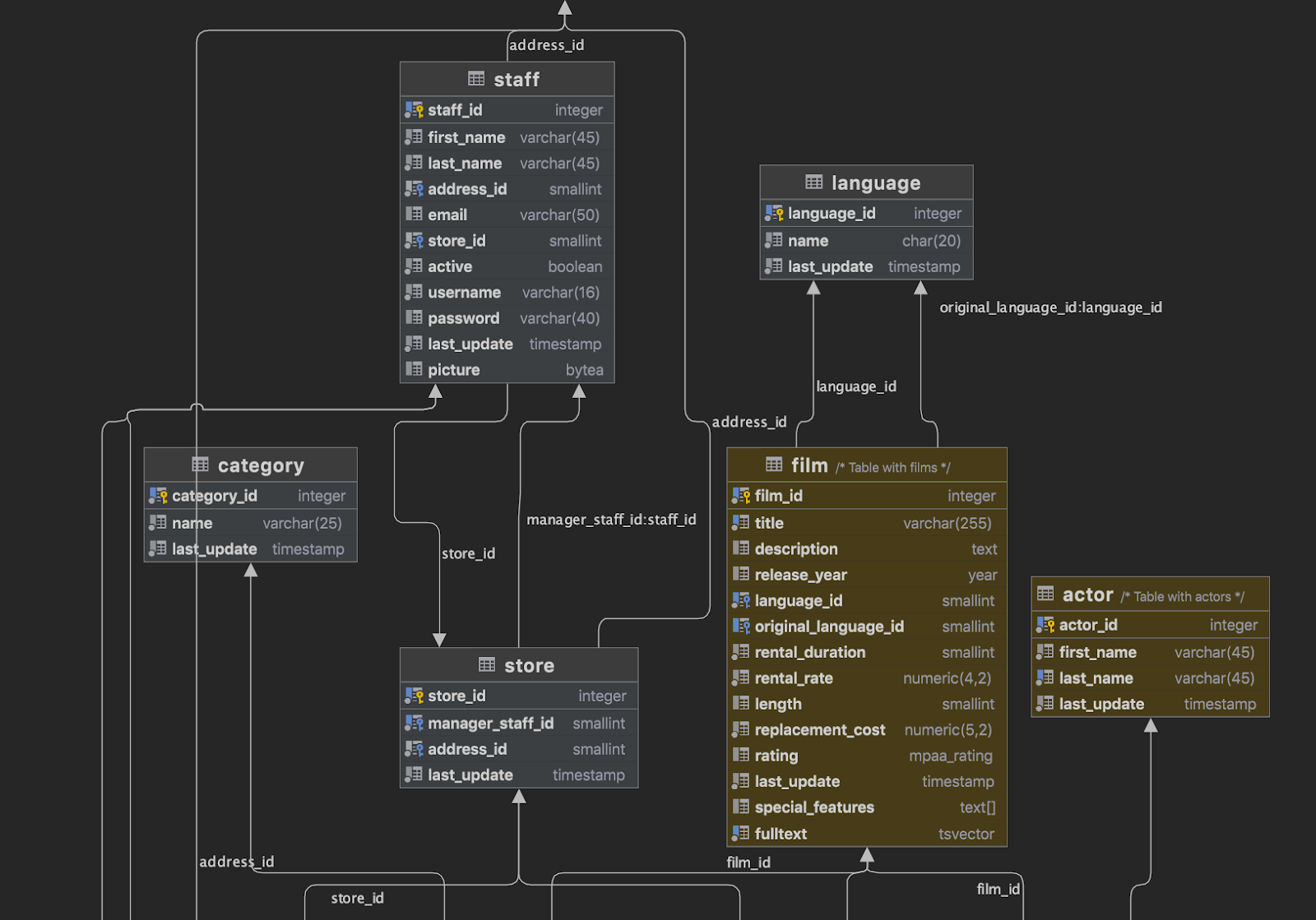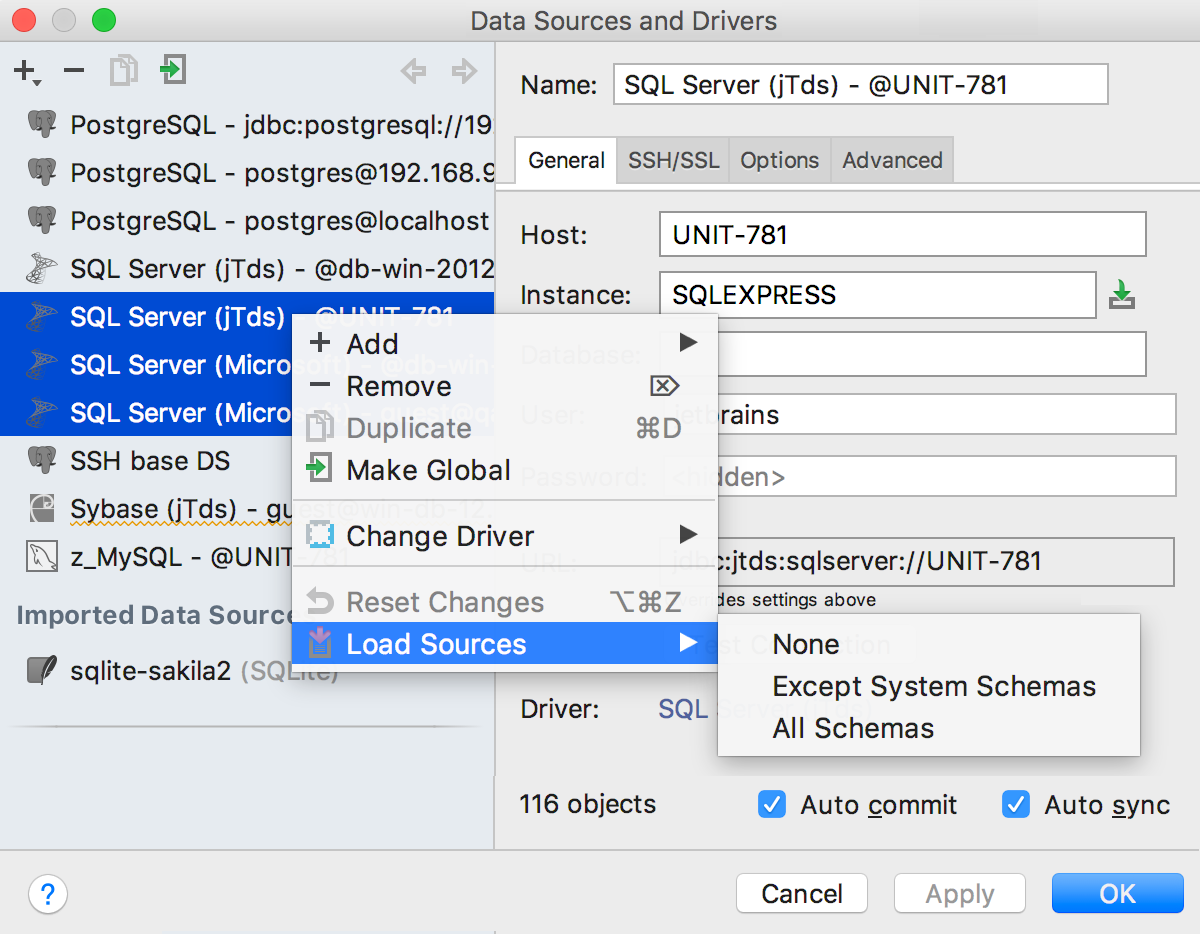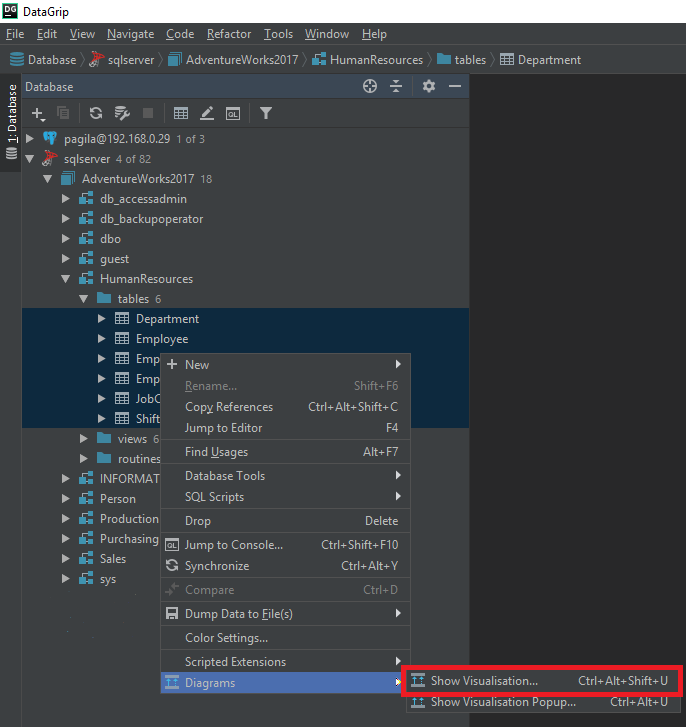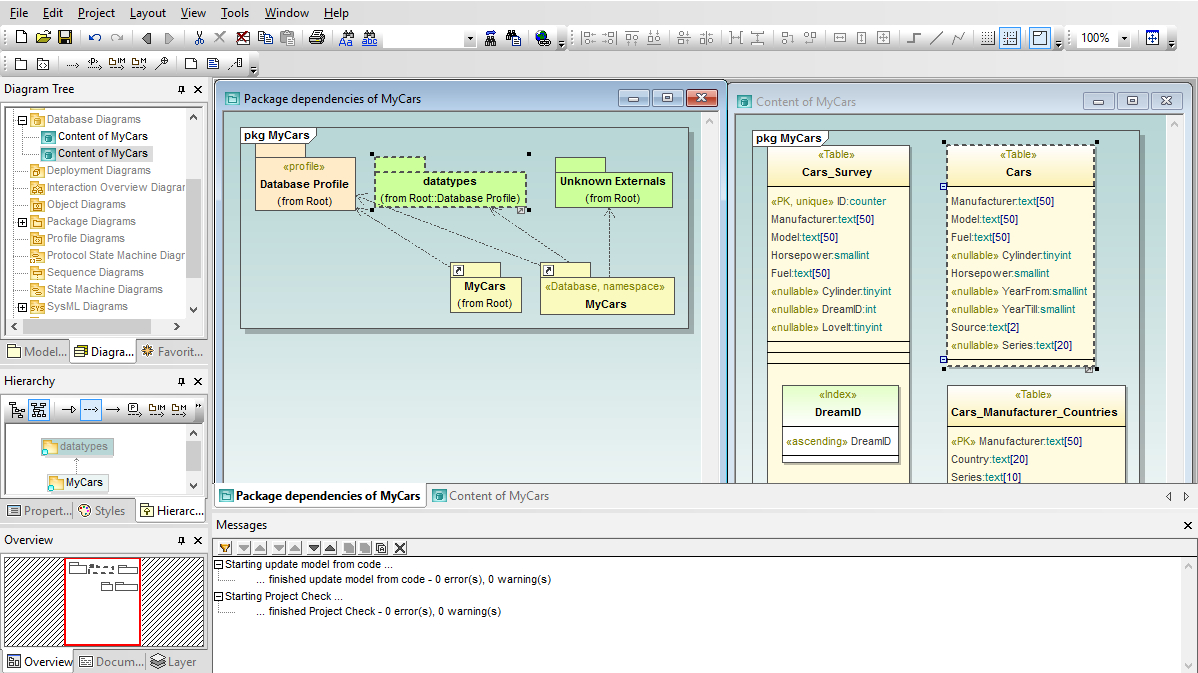

Datagrip diagram free#
Its diagram feature seems quite nice when you look at screenshots, and it has very interesting features such as table groups and free floating text.

Like all database clients, MySQL Workbench has to be installed on your machine. From the screenshots I have seen, it seems a bit old school but maybe has some interesting features. Sadly I couldn’t test it as I’m on Ubuntu and can’t find a Toad version to run, and I didn’t want to remove it from here as I heard good feedback on it so here it is… If you are on Windows, feel free to test it and see how it goes. But for database querying inside your IDE, it’s the best tool here, but that’s not this article topic ^^ My recommendation: Regarding diagrams and database exploration, just forget it. There is a lot of details that makes the diagram hard to read You can hide columns in the diagram making it much more readable But everything is displayed right away which make diagrams hard to read and understand, even for small side projects like Gospeak (26 tables).Īlready connected to your database if you use it as database client, so very easy to get your diagram It also offers an ER diagram with a quite good auto-layout. It’s quite good for that and as it’s integrated into IntelliJ IDEA IDE, so it’s my daily tool for this. If you regularly work with databases, you probably already use some.ĭatagrip is primarily a database client, allowing you to connect and query all of your databases. They often offer some ERD capabilities, but as a side feature, often basic and not really usable with more than a few tables. On the opposite of drawing tools, database clients are directly connected to a live database and allow to perform any kind of querying or manipulation of your database. No time spent looking for the perfect shape, loosing your thoughts. My recommendation: If you are looking for a blank canvas where you can draw what you have in mind, without constraints, this is probably your go-to tool. But also quite fuzzy for an ERD… 🙃įorget about precision or exhaustivity, welcome sketches With it, you focus on your content instead of the tool. This one is the simplest drawing tool, you just have some text, boxes, arrows and a few more things. Still use it mostly to build a static diagram, not to work daily with your database. My recommendation: If you are already a Lucidchart user or if you want to create a printable chart with other visuals than just your tables and relations such as a title, some comments, images or arrows, it can be a great option with the page settings and structure import.

The editor is very slow, edit experience is not very good You can create good things but everything is very manual, doesn’t scale well Has a lot of things, a bit overwhelming the first time You can add/change anything you want in the diagram As a drawing tool you can customize everything, and you can surely create beautiful diagram, but it will take a lot of time.

The SQL import was quite easy, and the fact it generated tables as saved shapes helped a lot to manually add them in the canvas (instead of having everything loaded from scratch and figure it out). If you are looking for an online pen and paper to draw your database schema, they are the tool you need.Īs a drawing tool I didn’t expect much but had a good surprise. They may have dedicated assets for ER diagrams and their main selling points here are their flexibility and design capabilities. Here are the categories and the best ones I found in each of them:Īs Entity-Relationship Diagrams are primarily diagrams, no surprise we find here diagramming tools. No need for exhaustivity here, just know where to look and find one that does the job.Īfter looking at a lot of them, I could identify 4 categories or relevant tools (leaving many on the side as they are quite outdated). Either strict ER diagrams with all the correct notations or kind of ER diagrams, just having tables and relations but without all the semantics of an ER diagram.Īs the offer is huge (here is a list of 79 Data Modeling Tools Compared, and it’s far from complete), focus on the task you want to achieve to choose a category, then try out a few ones. And when looking for a visual tool for your database, you will always find Entity-Relationship Diagrams (ERDs) on your way. Finding the right tool for the job can clearly be a game changer.


 0 kommentar(er)
0 kommentar(er)
